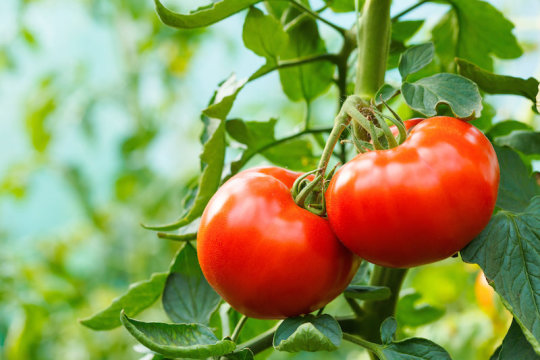[ad_1]
Once dismissed as ‘junk DNA’ that served no purpose, a family of ‘jumping genes’ found in tomatoes has the potential to accelerate crop breeding for traits such as improved drought resistance.
Researchers from the University of Cambridge’s Sainsbury Laboratory (SLCU) and Department of Plant Sciences have discovered that drought stress triggers the activity of a family of jumping genes (Rider retrotransposons) previously known to contribute to fruit shape and colour in tomatoes. Their characterisation of Rider, published today in the journal PLOS Genetics, revealed that the Rider family is also present and potentially active in other crops, highlighting its potential as a source of new trait variations that could help plants better cope with more extreme conditions driven by our changing climate.
“Transposons carry huge potential for crop improvement. They are powerful drivers of trait diversity, and while we have been harnessing these traits to improve our crops for generations, we are now starting to understand the molecular mechanisms involved,” said Dr Matthias Benoit, the paper’s first author, formerly at SLCU.
Transposons, more commonly called jumping genes, are mobile snippets of DNA code that can copy themselves into new positions within the genome — the genetic code of an organism. They can change, disrupt or amplify genes, or have no effect at all. Discovered in corn kernels by Nobel prize-winning scientist Barbara McClintock in the 1940s, only now are scientists realising that transposons are not junk at all but actually play an important role in the evolutionary process, and in altering gene expression and the physical characteristics of plants.
Using the jumping genes already present in plants to generate new characteristics would be a significant leap forward from traditional breeding techniques, making it possible to rapidly generate new traits in crops that have traditionally been bred to produce uniform shapes, colours and sizes to make harvesting more efficient and maximise yield. They would enable production of an enormous diversity of new traits, which could then be refined and optimised by gene targeting technologies.
“In a large population size, such as a tomato field, in which transposons are activated in each individual we would expect to see an enormous diversity of new traits. By controlling this ‘random mutation’ process within the plant we can accelerate this process to generate new phenotypes that we could not even imagine,” said Dr Hajk Drost at SLCU, a co-author of the paper.
Today’s gene targeting technologies are very powerful, but often require some functional understanding of the underlying gene to yield useful results and usually only target one or a few genes. Transposon activity is a native tool already present within the plant, which can be harnessed to generate new phenotypes or resistances and complement gene targeting efforts. Using transposons offers a transgene-free method of breeding that acknowledges the current EU legislation on Genetically Modified Organisms.
The work also revealed that Rider is present in several plant species, including economically important crops such as rapeseed, beetroot and quinoa. This wide abundance encourages further investigations into how it can be activated in a controlled way, or reactivated or re-introduced into plants that currently have mute Rider elements so that their potential can be regained. Such an approach has the potential to significantly reduce breeding time compared to traditional methods.
“Identifying that Rider activity is triggered by drought suggests that it can create new gene regulatory networks that would help a plant respond to drought,” said Benoit. “This means we could harness Rider to breed crops that are better adapted to drought stress by providing drought responsiveness to genes already present in crops. This is particularly significant in times of global warming, where there is an urgent need to breed more resilient crops.”
This work was supported by the European Research Council and the Gatsby Charitable Foundation.
Story Source:
Materials provided by University of Cambridge. The original story is licensed under a Creative Commons License. Note: Content may be edited for style and length.
[ad_2]















